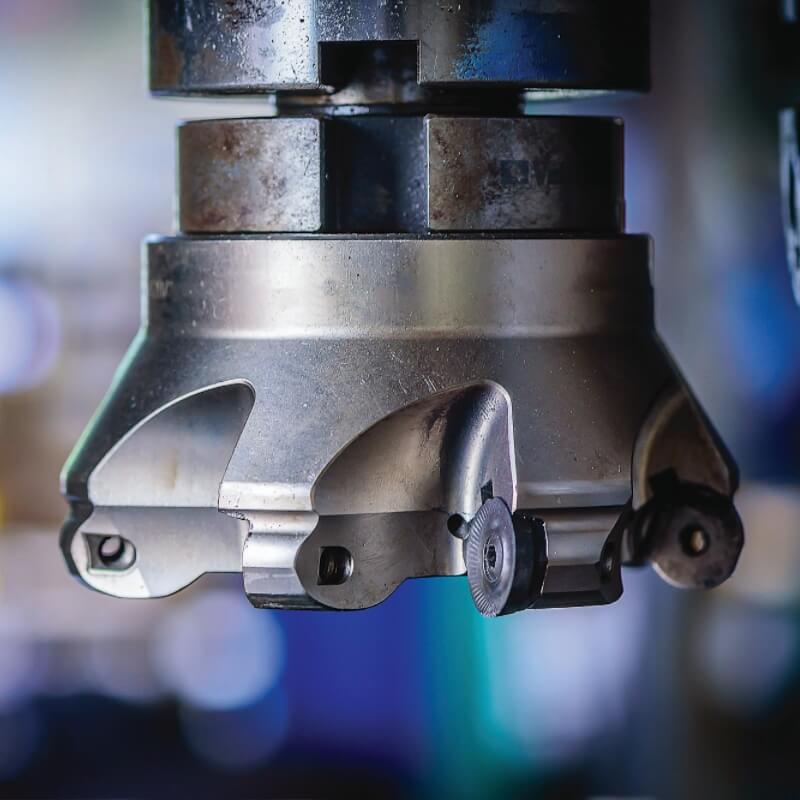
In the world of CNC machining, tool selection is critical to achieving precision, efficiency, and cost-effectiveness. Among various insert geometries, round carbide inserts stand out for their durability and versatility. But what exactly are round carbide inserts, and when should you use them instead of other shapes? This article will guide you through everything you need to know about round carbide inserts, including their features, benefits, and best-use scenarios.
Round carbide inserts are cutting tools made from tungsten carbide, featuring a circular cutting edge. They are commonly used in turning, milling, and profiling operations. Unlike triangular or square inserts, round inserts distribute cutting forces more evenly, reducing tool wear and improving chip control.
These inserts often come in designations like RCGT, RNGN, or RNMA, depending on their chipbreaker design, tolerance class, and edge preparation.
Durable Design: The round shape offers more cutting edge per insert, enhancing longevity.
High Edge Strength: Ideal for handling heavy cuts and interrupted cutting conditions.
Versatility: Suitable for roughing and finishing in a wide range of materials, including steel, stainless steel, cast iron, and exotic alloys.
Superior Heat Dissipation: The large surface area helps in managing heat during high-speed operations.
Round carbide inserts are perfect for roughing operations where large amounts of material are removed. Their robust shape withstands the high forces generated during aggressive cuts.
For applications like milling where the cutting edge frequently enters and exits the workpiece, round inserts offer better resistance to chipping and breakage compared to square or pointed inserts.
When machining hard alloys or cast iron, the high compressive strength and durability of round carbide inserts ensure stable performance and long tool life.
The curved cutting edge provides smoother transitions in contouring applications, especially useful in die and mold industries.
Despite being often used for roughing, with the right setup, round inserts can also achieve excellent surface finishes on complex profiles.
| Pros | Cons |
|---|---|
| High strength and toughness | Less effective in sharp-cornered cuts |
| Ideal for heavy roughing | May require more power |
| Great for interrupted cuts | Not ideal for internal threading |
| Long tool life | Limited chipbreaker options |
When selecting a round carbide insert, consider the following factors:
Insert Grade: Choose the right carbide grade for the material (e.g., P for steel, K for cast iron).
Coating: PVD and CVD coatings improve wear resistance and reduce friction.
Chipbreaker Design: If your operation requires chip control, select an insert with an appropriate chipbreaker.
Insert Size and Radius: Larger radii can handle deeper cuts but may require higher machine power.
Round carbide inserts are an essential tool for any machinist dealing with tough materials, heavy cuts, or interrupted cutting conditions. Their unique geometry offers unmatched strength and durability, making them a go-to solution for roughing and profiling operations.
Whether you’re operating a CNC lathe or a milling center, understanding when and how to use round carbide inserts can significantly enhance your machining performance and tool life.
Contact person: Steve Lee
E-mail: [email protected]
Phone: 86-731-22200908
Address: Floor 4,Building NO.15,Zhichuang Plaza,NO.1299,Liyu Road,Tianyuan District,Zhuzhou City, Hunan, P.R. CHINA
Tel:0086-19973342799
E-mail: [email protected]

WeChat Official Account